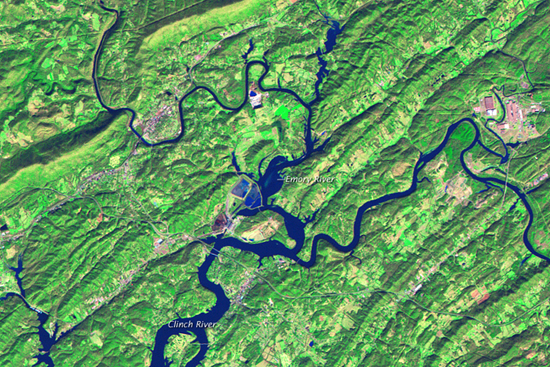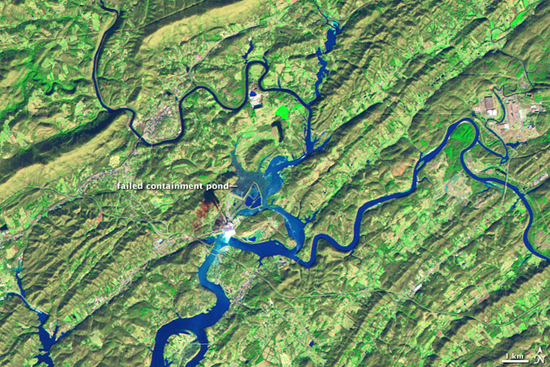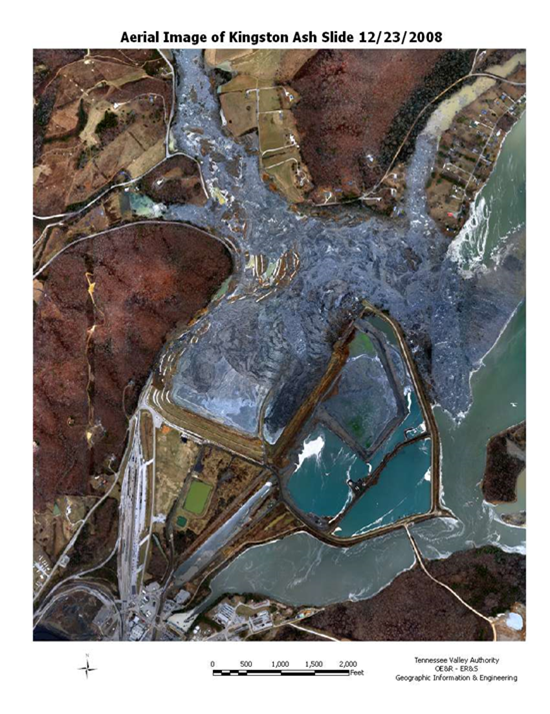Kingston Coal Ash Slide: Then and Now
In the early morning hours of December 22, 2008, the earthen wall of a containment pond at Tennessee’s Kingston Fossil Plant gave way. The breach released 1.3 million cubic meters (1.7 million cubic yards) of fly ash—a coal-combustion waste product captured and stored in wet form. As fly ash dries, it is typically moved to new containment areas to continue drying, and it was one of these areas, housing dredge cells that facilitate further drying, where the containment wall broke. Some of the sludge traveled north through a valley, and some flowed to the east, where it damaged dozens of homes. The spill infiltrated the Emory River, buried some 120 hectares (300 acres) in sludge, and even knocked a nearby home completely off its foundation. NASA Earth Observatory
Emory River before the coal ash spill  Emory River after the coal ash spill
Emory River after the coal ash spill 
The Thematic Mapper on NASA’s Landsat 5 satellite captured these images of the Kingston Fossil Plant and its surroundings on November 20, 2008, a month before the spill (bottom), and December 22, 2008, immediately after the spill (top). In these false-color images, water appears blue, and sediment-laden water appears light blue. Vegetation appears green, and bare ground and urbanized areas appear pinkish-brown. In the November image, walls visibly contain two adjacent slurry ponds at the plant—one in the northwest and one in the southeast—but in the December image, the walls of the northwestern slurry pond have given way. In this image, light blue slurry covers the ground to the north and east of the plant. Sediment also clogs the nearby Emory River, evident from the waterway’s relatively light blue color. NASA Earth Observatory
20 November 2008  22 December 2008
22 December 2008  2008
2008  23 December 2008
23 December 2008  8 October 2009
8 October 2009  Video of the spill aftermath
Video of the spill aftermath
Incredible, that deniers and delayers and ignorers cite economic costs as a barrier to converting to clean energy, but never mention the astronomical costs of coal and oil spills.